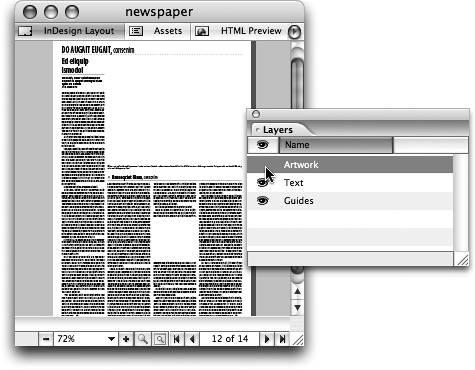TIP 166: Using InDesign Layers to Customize Web Layout
| Most designers are comfortable with using layers in Photoshop, but using layers in a page-layout application such as InDesign can be a relatively new concept for many. We really encourage designers to use the document-wide layers feature in InDesign because there are so many practical benefits. For example, in the world of print design it can make it easy to create documents with multiple languages, avoid common transparency problems, and simplify handing off projects to coworkers and freelancers.
If that weren't enough, using layers in InDesign can also make it easier to convert print designs to Web pages using GoLive CS2. If you expect to repurpose an InDesign layout for the Web, you should consider using layers that will streamline the process later. For example, you might create one layer for text and another layer for images. After you package the InDesign layout (see Tip 160) and open the Package window in GoLive, open the Layers palette to see the original InDesign layers. Now click the eyeball icons in the Layers palette to toggle the visibility of the layers in the Package to make it easier to select just the content you want for your Web page (Figure 166). Figure 166. The empty white areas on this page were photographs that were temporarily disabled using the Layers palette in GoLive.
|
EAN: N/A
Pages: 301
